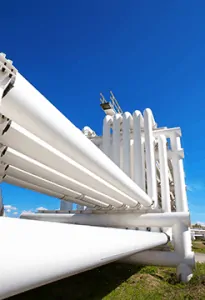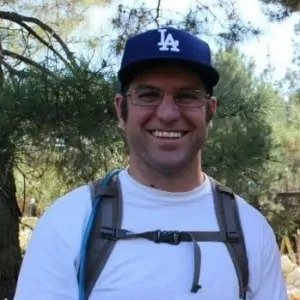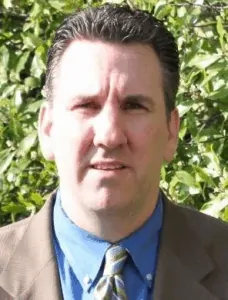

The Pennsylvania Independent Oil & Gas Association (PIOGA) is hosting its 2024 Spring Meeting at Rivers Casino in Pittsburg, Pennsylvania. This year’s event theme, “Climate, Commodities, and Chaos: Threats to a Strong U.S. Energy Game Plan,” will explore topics concerning changes in the oil and gas industry, including regulatory updates, consumer preferences, and market sentiment. The agenda features an oil and gas producers’ roundtable on navigating risks in energy development, regulatory updates, and a post-meeting cocktail reception where attendees and exhibitors can network with each other.
Registration is open to PIOGA members and non-members, with special pricing for students. Register today!
In an environmentally safe, less costly, and efficient manner, the disposal and recycling of millions of gallons of production water (brine water) and flowback water generated from the oil and gas industry annually continue to be challenging. While new technologies are on the horizon, there remains a long road ahead to their implementation.
In his article in Geosynthetic News, Neil Nowak writes in detail about three sites in Wyoming, Utah, and Texas that are evaporating or recycling water in geomembrane-lined ponds. Nowak’s article demonstrates the successful use of black high-density polyethylene (HDPE) liners to increase evaporation over clay or unlined ponds and using a white liner to reduce evaporation relative to a black liner.
Each project has been operational for several years; they continue to expand under their permits. Nowak takes us through a combination of favorable factors to the evaporative process, including the natural characteristics of each sites’ climate and the business and environmental goals.
The projects are interesting in that each facility provides oil and gas production companies in the area with a large commercial alternative to production water and flowback disposal versus numerous small ponds or disposal via injection wells.
About the Author: 
Mr. Nowak has managed environmental compliance, evaporation pond design and permitting, and construction quality assurance activities across the Southwest. As a land-use planner and Environmental Engineer, he explains how various environmental technologies work under specific conditions to companies and the public. Often he is called to public comment meetings and county commissioner meetings, where he prepares and presents project details for review and approval. He works closely with local, state, and federal regulatory agencies to ensure that the engineering and construction of sites comply with all current applicable requirements.
SCS Engineers has published two Technical Bulletins summarizing the O&G NSPS final rule and outlining the new LDAR requirements. The two Bulletins explain the modification of how oil and gas sources will be permitted under the Clean Air Act and the new requirements to reduce methane leaks from new oil and gas facilities consistent with the EPA’s New Source Performance Standards.
Reference the U.S. Environmental Protection Agency (EPA) new source performance standards for Crude Oil and Natural Gas Production, Transmission and Distribution (O&G NSPS), which includes amendments to 40 CFR Part 60, Subpart OOOO and a new Subpart OOOOa. Subpart OOOOa will apply to facilities constructed, modified or reconstructed after September 18, 2015.
Click to read or share the Technical Bulletins:
https://www.epa.gov/controlling-air-pollution-oil-and-natural-gas-industry
Pat Sullivan, REPA, CPP, BCES
(916) 361-1297
An SCS Engineers Technical Bulletin will be released early in the week.
The U.S. Environmental Protection Agency issued limits on methane emissions from oil and gas wells that are more stringent than those it proposed last year. The final regulations released on Thursday, May 12, 2016, will add hundreds of millions in additional costs per year; at least 25 percent higher than the preliminary version published in August 2015.
EPA Administrator Gina McCarthy told reporters on a conference call that the mandates, applying immediately to new and modified wells, are a “critical first step in tackling methane emissions from existing oil and gas sources.”
Under the rule, companies must upgrade pumps and compressors while expanding the use of “green completion” technology meant to capture the surge of gas that can spring out of newly fracked wells. Such green completion techniques have been required for new and modified natural gas wells since 2015, but Thursday’s rule would broaden the requirement to oil wells too.
Take me to the EPA summaries. Click on the information sheets listed below:

Long story short, an escapee from San Quentin and any uncontrolled methane air molecule may be more similar than we may presume. In fact, a common LDAR practice is to use an infrared imaging camera; similar to the camera often used in search of fugitive criminals.
On a serious note, fugitive emissions are something that both industry and regulators have been focused on for decades, and the past and present efforts made to limit them are no less than remarkable.
Specific to Onshore Oil and Gas Exploration & Production, the Federal Regulations applicable to fugitive emissions are fairly young. Finalized in 2012, NSPS OOOO is no longer a toddler and is in the middle of growing into NSPS OOOOa (Public Comment Deadline March 11, 2016). On a national scale, NSPS OOOOa will expand fugitive emission monitoring and control requirements (VOC’s and methane) to several facility types associated with the industry and is expected to be finalized before the close of 2016.
In California, fugitive emissions from Onshore Oil and Gas Exploration & Production have been regulated for a long time. In fact, the O&G industry in Santa Barbara County has dealt with fugitive emission requirements since 1979. Since then SCS Engineers has been assisting with fugitive emission monitoring for our valued clients. Today, SCS Engineers provides the Oil and Gas Exploration and Production industry with efficient and effective LDAR services.
So fear not, SCS Engineers is ready to supply the knowledge and skill set you need to stay compliant, maintain your operations, and respect your bottom line. Remember, unless the doors are closed, pumps are turned off, and equipment is flushed and plugged; fugitive emissions requirements and LDAR will likely still apply.
Applicability: Determining Federal vs. State oversight is the first step. Non-Major Source Oil and Gas Production facilities are either subject to NSPS OOOO (soon to be OOOOa) or a related State specific rule (i.e. Colorado Regulation 7). Once oversight is determined, then there may still be exemptions for your facility (i.e. facility constructed before August 23, 2011). And finally, once regulatory oversight is confirmed and you determine that LDAR is required for your facility, then the last step is to figure out which equipment is applicable (i.e. VOC content > 10% by weight). Basically, an applicability determination can be daunting.
Equipment: EPA’s Method 21 is historically and currently referenced in all LDAR regulations. Method 21 requires an instrument such as the Flame Ionization Detector (FID) or Photo Ionization Detector (PID). More recently the Optical Gas Imaging (OGI) Camera has been included in LDAR regulations and utilized in LDAR programs. Presently, there are several instrument technologies that exist and are in the works, but not yet mainstream in Oil and Gas sector. Ultimately, if you were to find yourself conducting LDAR monitoring at your oil and gas facility tomorrow per an established regulation, you would most likely need to use an FID or OGI.
Recordkeeping: Personally, I like the simplicity of using paper forms for field notes; however, the old-fashioned way comes with risk. The up-front and ongoing data involved with an LDAR program is too much for maintaining a paper to computer process, regardless of how organized you think you are. Therefore, a computer database platform is recommended and necessary for managing your LDAR recordkeeping. Beyond just recordkeeping, a database platform can organize schedules, alerts, generate reports, extract trends, and many other applications to help keep your LDAR program compliant. One such platform worth considering is SCSeTools™. This cloud-based software can provide the database capabilities used on the desktop, but almost more importantly, provides mobile data input capabilities with the SCS MobileTools™ application fit for Android and IOS systems. Keep the fugitives from escaping, and document containment for the authorities!

Whether you want to discuss LDAR or Dodger baseball, don’t hesitate to contact me, or SCS Engineers.
Resources:
Learn more on the SCS service pages and read SCS project case studies from across the nation to help fine tune your program.
Outside links to the EPA proposed rulemaking website:
Technical bulletins provide salient information in a condensed format. These summaries are useful to understand and start to plan for potential impacts to your business. Both bulletins posted today include deadlines and additional resources with contact information to help answer your questions. The two bulletins posted today are as follows:
Clicking the title of each Technical Bulletin will take you to the full text. Each Bulletin may be shared, emailed, or printed.
About Pat Sullivan:

Pat Sullivan, BCES, CPP, REPA, is a Senior Vice President of SCS Engineers and our National Expert on the Landfill Clean Air Act and the New Source Performance Standard (NSPS). Mr. Sullivan has over 25 years of environmental engineering experience, specializing in solid and hazardous waste-related issues.
Click on Pat’s name to see his full qualifications and experience.
The U.S. Environmental Protection Agency (EPA) issued a final rule on September 29, 2015, seeking to further control emissions of hazardous air pollutants (HAPs) and volatile organic compounds (VOCs) from petroleum refineries.
This action finalizes the residual risk and technology review conducted for the petroleum refinery source category regulated under the National Emission Standards for Hazardous Air Pollutants (NESHAP; 40 CFR Part 63, Subpart UUU), including the refinery Maximum Achievable Control Technology Standard (MACT) 1 and Refinery MACT 2.
Click here to read the Technical Bulletin